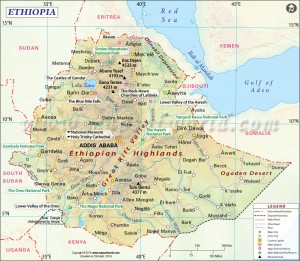Ethiopia has the second largest population in Africa, over 90 million, which increases by 2.6% per annum. Ethiopia is one of the world’s poorest countries; approximately 77% of the population lives with less than $2 a day. The Human Development Index is only 0.328 (Finland: 0.871), the life expectancy at birth of 56.1 years and the Gross National Income per capita was US$992 (Finland US$ 37000) in 2010. Agriculture in Ethiopia is the foundation of the country’s economy. The sector accounts for 50% of GDP and more than 80% of exports with over 80% work force employment.
The smallholder farmers cultivate 95% of the cropped area and are the backbone of the agricultural sector although the way they produce is traditional and poor management system with outdated production technology. This farming practice generally characterized by low yield per unit area. The performance of agriculture, however, in terms of feeding the country’s population, which is growing at about 2.6 per cent per annum, is poor. Feeding the ever-growing Ethiopian population with the continuously shrinking and nutrient depleted soils is going to be very difficult. This makes the country to have the most precarious long-term food security situation in Sub-Saharan Africa. Food security is low despite annual foreign food aid and national development projects in food insecure areas. The basic protein source is pulse legumes. SOILMAN is therefore focusing on improving growth and nitrogen fixation by introducing inoculation of pulses with indigenous, tested rhizobium bacteria.

